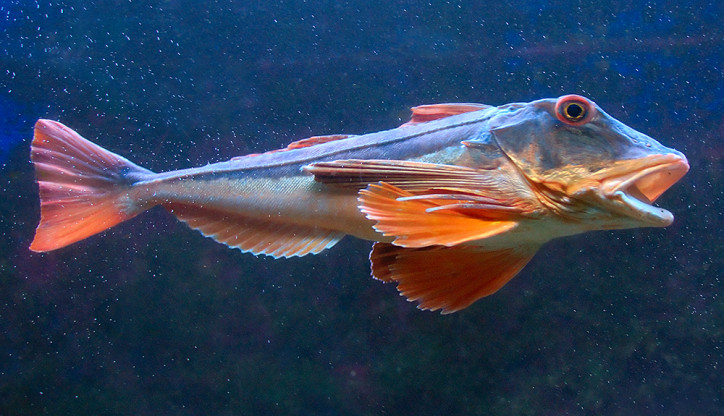Fish of the Chelidonichthys (smallscaled gurnards) genus of the Triglidae (sea robins or gurnards) family of the suborder Scorpaenoidei of the Scorpaeniformes order of the Acanthopterygii superorder.

(Tub gurnard. Photo by © Luc Viatour. commons.wikimedia.org)
Tub gurnard (Chelidonichthys lucerna) was first described in 1758 by the Swedish naturalist Carl Linnaeus (1707-1778).
It inhabits the depth of 20-318 meters, prefers to swim close to the sandy, oozy and pebbly bottom. The maximum recorded length is 75 cm; specimens up to 30 cm long are more common. The maximum weight is 6 kilograms. It feeds on fish, crustaceans and mollusks.

(Tub gurnard. Photo by © Roberto Pillon. fishbase.org)
It is a permanent inhabitant of the Adriatic Sea.
When it’s taken out of the water, it makes sounds resembling grunts.
Names of tub gurnard (Chelidonichthys lucerna) in other languages as follows:
Rode poon (Dutch), Χελιδονάς (Helidonas) (Greek), Begel (Spanish), Capone gallinella (Italian), Roter Knurrhahn (German), Kurek czerwony (Polish), Cabra-cabaço (Portuguese), Rândunica-de-mare (Romanian), Жёлтый морской петух (Zhjoltyi morskoj petuh) (Russian), Lastavica balavica (Serbian, Croatian), Veliki krulec (Slovenian), Kırlangıç balığı (Turkish), Perlon (French), Štítník červený (Czech).